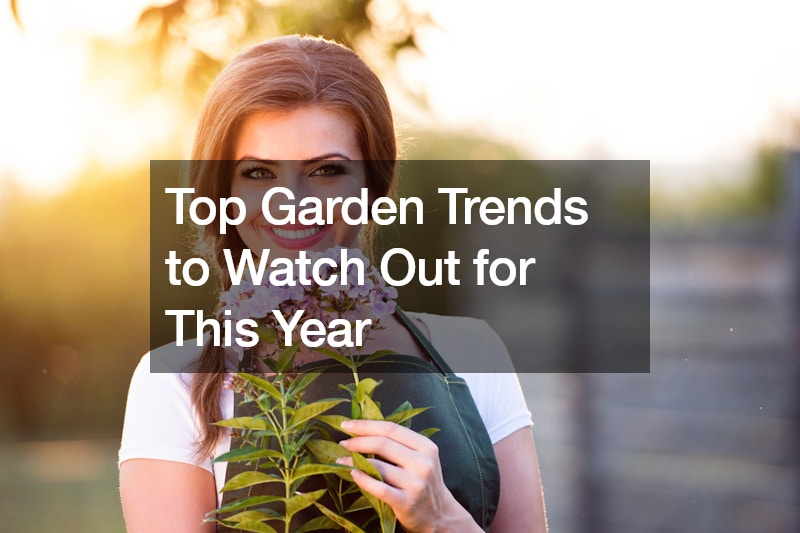As the seasons change and gardening enthusiasts eagerly prepare for another year of nurturing their outdoor sanctuaries, it’s essential to stay updated on the latest trends shaping the gardening world. From embracing edible landscapes to cultivating eco-friendly practices, there’s a wealth of exciting developments to explore in 2024. Let’s delve into some of the top garden trends to watch out for this year.
1. Edible Gardens
Gone are the days when gardens were solely ornamental. In recent years, there has been a resurgence of interest in edible landscapes, where beauty meets functionality.
Edimentals, as they’re often called, combine the aesthetic appeal of traditional gardens with the practicality of growing herbs, fruits, and vegetables. Not only do these gardens provide a sustainable source of fresh produce, but they also attract beneficial pollinators, enhancing biodiversity in the garden.
2. Native Plants and the New Perennial Movement
Native plants are making a comeback, and for a good reason. The new perennial movement advocates for using indigenous plant species in garden designs to create habitats for local wildlife and reduce maintenance needs. By opting for native plants, gardeners can support pollinators, conserve water, and create resilient ecosystems that thrive in their natural environments.
3. Eco-Friendly Rain Gardens
With concerns about water runoff and environmental degradation on the rise, eco-friendly rain gardens are gaining popularity among gardeners. These gardens are designed to capture and absorb rainwater, preventing runoff and replenishing groundwater supplies. By incorporating native plants with deep root systems, rain gardens not only mitigate flooding but also provide valuable habitat for wildlife.
4. Bug-Friendly Practices
Insects play a crucial role in maintaining garden health, yet traditional gardening practices often overlook their importance. This year, more gardeners are embracing bug-friendly practices, such as avoiding chemical pesticides and cultivating diverse plantings to attract beneficial insects. By creating a welcoming environment for pollinators and pest predators, gardeners can achieve a balanced ecosystem and reduce the need for harmful chemicals.
5. Adapting to Climate Change
Climate change continuously impacts weather patterns and growing conditions, which is why gardeners are looking for resilient plant varieties that are able to withstand fluctuating temperatures and extreme weather events. Native plants are inherently adapted to local climates, making them a smart choice for gardeners looking to adapt to changing environmental conditions while supporting biodiversity.
6. Creating Unique Outdoor Spaces
Gardens are not just for growing plants; they’re also an extension of our living spaces. This year, expect to see more gardeners creating unique outdoor areas tailored to their interests and hobbies. Whether it’s a vineyard for wine enthusiasts or an orchard for fruit lovers, gardens are becoming multifunctional spaces that reflect the personalities and passions of their caretakers.
7. Embracing Gravel Gardens for Low-Maintenance Beauty
Gravel gardens offer a low-maintenance alternative to traditional plantings, particularly in arid climates or areas with poor soil quality. By using gravel as a mulch or ground cover, gardeners can suppress weeds, conserve moisture, and create visually striking landscapes with minimal effort. When combined with drought-tolerant plants, gravel gardens can thrive with little intervention, making them an attractive option for busy gardeners.
8. Preserving Garden Beauty in Creative Ways
Gardeners are finding inventive ways to preserve the beauty of their gardens beyond the growing season. From drying flowers for decorative arrangements to creating botanical-inspired art installations, there’s no shortage of creative possibilities. By repurposing garden materials and embracing DIY projects, gardeners can enjoy the fruits of their labor year-round.
9. Rediscovering the Beauty & Biodiversity of Stumpery Gardens
Stumpery gardens offer a unique opportunity to repurpose tree stumps and fallen logs into habitats for new plant life and wildlife. These unconventional gardens celebrate the natural beauty of decaying wood while providing shelter for insects, amphibians, and small mammals. By working with a professional tree service to carefully remove and repurpose tree stumps, gardeners can create thriving ecosystems that celebrate the cycle of life and decay.
10. Cultivating Garden Knowledge at Home
With an abundance of online resources and educational opportunities available, more gardeners are taking their learning into their own hands. Whether it’s through online courses, gardening forums, or hands-on experimentation, there’s never been a better time to expand your gardening knowledge from the comfort of home. By staying informed and connected, gardeners can continue to grow and evolve their skills while contributing to the vibrant gardening community.
To conclude, the gardening landscape is evolving, with a renewed focus on sustainability, biodiversity, and creativity. By embracing these top garden trends, gardeners can cultivate thriving landscapes that not only beautify their surroundings but also contribute to a healthier planet for generations to come. So, roll up your sleeves, dig in the dirt, and let your garden journey begin!
.




Leave a Reply